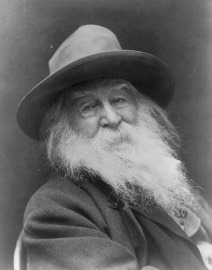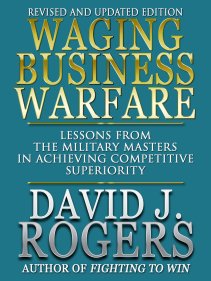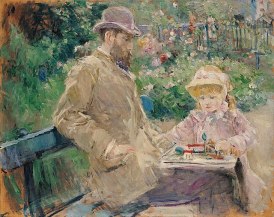I wanted to know why artists and writers are so self-absorbed.
Then I wanted to know why writers, painters, and other artists bloom late.
In popular posts I addressed those questions. Now I want to know why so many writers and artists are intense and have intense personalities.
Waking, Wanting To Get Going
 I was excited waking up at 3:00 A.M. yesterday, and I was not thinking of going back to sleep. I wanted to finish some poems where I had left off the night before. I thought, “Let my wife–a calmer, less excitable person–sleep; I love to work and I have work to do.”
I was excited waking up at 3:00 A.M. yesterday, and I was not thinking of going back to sleep. I wanted to finish some poems where I had left off the night before. I thought, “Let my wife–a calmer, less excitable person–sleep; I love to work and I have work to do.”
Then I started thinking that it was likely that other creative people I know–good friends in the arts–at that very moment also were waking early and were anxious to get to work on their project, that we are similar–we resemble each other in regard to the emotions we bring to bear as we live and work–that we are all creative and we are all intense and excitable. Certain qualities endear creative people to me. One is their intensity.
It seemed to me then that intensity and excitability were a pattern, a hard and fast characteristic of myself and my artful friends, and come to think of it, of many of the famous writers and artists and other creative people I have been reading about, studying, admiring, and writing about all my life. Their intensity made them different.
The Feeling of Intensity
What does intensity feel like?
 Intense writers and artists do everything intensely–experiencing, feeling, thinking, and imagining. They are significantly different human beings from other writers and artists (and agents and family members and co-workers) who are not intense. They feel their emotions strongly. They soar high with elevated emotions, and they plunge into dark moods, at times their moods changing so fast as to be bewildering. In contrast, people who are not intense the way so many writers and artists are feel their emotions more mildly and without such major fluctuations between the high moods and the low moods. Differences in intensity between people who work closely together or live together may cause conflicts.
Intense writers and artists do everything intensely–experiencing, feeling, thinking, and imagining. They are significantly different human beings from other writers and artists (and agents and family members and co-workers) who are not intense. They feel their emotions strongly. They soar high with elevated emotions, and they plunge into dark moods, at times their moods changing so fast as to be bewildering. In contrast, people who are not intense the way so many writers and artists are feel their emotions more mildly and without such major fluctuations between the high moods and the low moods. Differences in intensity between people who work closely together or live together may cause conflicts.
Some writers and artists feel that they are being flooded by waves of joy, that their every cell is being excited. Some writers and artists–perhaps you, certainly I–revise their work tirelessly, at times almost maniacally, ten times, twenty times, thirty times, until they are satisfied the work is the best they can do. Only then can they stop themselves.
The intensity of writers’ and artists’ personality is a powerful element of their creativity. The wonderful poet John Keats thought that intensity–not intelligence or any other quality — in and of itself is the most powerful creative element of all.
Intensity and the Arts
 Intensity is a quality found in many creative people that facilitates artistic pursuits. Abbe Dimnet said that the creator’s intensity will be reflected in the quality of the work: “The experience of most artists is that the quality of their production is in keeping with the intensity of their wish.” Henry James wrote: “It is art that makes life, makes intensity, makes importance.” Horace said, “Painters and poets alike have always had license to dare anything.” It is their intensity that gives them strength. Keats said, “The excellency of every art is its intensity “ A problem every writer and artist faces is maintaining in every phase of their story or painting the intensity that keeps it going and energizes the creator’s every gesture and the work’s every detail. They must be able to generate and sustain intensity as they work.
Intensity is a quality found in many creative people that facilitates artistic pursuits. Abbe Dimnet said that the creator’s intensity will be reflected in the quality of the work: “The experience of most artists is that the quality of their production is in keeping with the intensity of their wish.” Henry James wrote: “It is art that makes life, makes intensity, makes importance.” Horace said, “Painters and poets alike have always had license to dare anything.” It is their intensity that gives them strength. Keats said, “The excellency of every art is its intensity “ A problem every writer and artist faces is maintaining in every phase of their story or painting the intensity that keeps it going and energizes the creator’s every gesture and the work’s every detail. They must be able to generate and sustain intensity as they work.
Emotional Intensity and Over-Excitability of Many People in the Arts
“Emotional intensity” of the kind I am describing is a quality that Polish psychologist, psychiatrist, physician, and poet Kazimierz Dabrowski found when he studied intellectually or artistically gifted people. The degree of a person’s emotional intensity is a stable characteristic. Some people are intense; some are not. Just as self-absorbed artists and writers can’t help being self-absorbed any more than they can help having the color eyes they do, intense artists and writers can’t help being intense.
Dabrowski recognized that, as I thought, creative people experience an intensification of experience much beyond what other people experience. Dabrowski considered the intensity of their emotions, their sensitivity and emotional extremes–their “over-excitabilities”–to be part and parcel of their makeup. Every aspect of their personality is intense.
They are “spirited,” and are also more sensitive, perceptive, energetic, and persistent than other people. They possess what I have called “inner” skills such as persistence, confidence, and courage that not everyone has but that lead directly to success in the arts. Dabrowski identified five “overexcitabilites” exhibited by more people in the artistically gifted population than in the general population.
The Five Dimensions of Intense Writers’ and Artists’ Lives
- Sensual
Sensualists, intense writers and artists seek an enhanced sensory and aesthetic pleasure in seeing, smelling, tasting, touching, hearing, and sex. They delight in beautiful objects and in sounds of words, and in form, color, and balance. Negatively, they may overeat and be sexually over-indulgent.
- Psychomotor
Intense people have a surplus of energy, are competitive, enjoy intense physical activity such as fast games and sports, often are compulsive talkers–they may jabber–and act impulsively. They may have nervous habits. They may bite their nails or have nervous twitches.
- Intellectual
They enjoy intensified activity of their mind in their curiosity, concentration, and in their capacity for sustained intellectual effort, avid reading, asking probing questions, and making keen observations. They can vividly recall what they see with their eyes (that fundamental necessity for writers and artists) and may be detailed planners. They are tenacious problem-solvers. They search for truth and understanding. They think about thinking and love theory and analysis. They are logical and independent thinkers.
- Imaginational
In speaking and writing, intense writers and artists often use images and metaphors, are given to poetic and dramatic perceptions, and are skilled at inventing. Some can make up fantasy worlds of their own and imaginary companions and are attracted to magic and fairy tales. Under emotional tension their imagery can mix truth and fiction. They may have elaborate dreams and illusions. They cannot tolerate boredom. They may lack self-judgment and be overly-critical.
- Emotional
The feelings and emotions of over-excitable writers and artists are intensified. They are given to extremes of emotions, complex feelings and a large range of emotions and have an awareness of the feelings of others. They have heights and depths of emotions that others lack. At times their mood soars. And it also may plunge. Their moods change quickly.
They may have strong physical expressions of over-excitability such as tense stomach, sinking heart, pounding heart, sweaty palms. Intense writers and artists experience euphoria, enthusiasm, and ecstasy, but also shyness, timidity, and obsessiveness.
But Dabrowski found that inner forces were at work in them also, forces that generated overstimulation, conflicts, and pain, and often set them out in a search for a way out. One way out may lead to inner growth and transformation, another may lead to results such as addiction.
Examples of Famous Intense Writers and Artists
 Who could be more intense than poet Walt Whitman who expressed a wish to have “one hour of madness and joy,” “to feed the remainder of life with one hour of fullness and freedom,” “To have the feeling today or any day I am sufficient as I am.” Who more intense than novelists Charles Dickens with his phenomenal storehouse of drive that enabled him to work on a multiplicity of books, speeches, plays, travels, and social projects at the same time without ever tiring?
Who could be more intense than poet Walt Whitman who expressed a wish to have “one hour of madness and joy,” “to feed the remainder of life with one hour of fullness and freedom,” “To have the feeling today or any day I am sufficient as I am.” Who more intense than novelists Charles Dickens with his phenomenal storehouse of drive that enabled him to work on a multiplicity of books, speeches, plays, travels, and social projects at the same time without ever tiring?
Or Thomas Wolfe whose monumental goal was nothing less than to describe in the millions of published words that poured out of him uncontrollably, as from a spigot, every experience he had ever had? And Gustave Flaubert, a pioneer of a modern writing style, who agonized rewriting his novels and stories to perfection? Or intense painter Vincent van Gogh who produced a masterpiece a day, or Claude Monet, who for his artistic experiments could paint thirty or forty canvasses of exactly the same scene.
There are drawbacks to a writer or artist being over-excitable and intense. But the advantages of being a writer or artist who is intense and has the powerful energies, the drive, and many other qualities that facilitate success in the arts far outweigh the negatives. The creative’s intensity is reflected in the quality of the work they produce–more intensity, better quality work.
If writers and artists are asked to identify the important characteristics they would l really like to have that would positively affect their career, they will be wise to identify intensity.
An intense writer or artist trying to create a vision they perhaps alone perceive is fortunate.
© 2023 David J. Rogers
For my interview from the international teleconference with Ben Dean about Fighting to Win, click the following link:
Order Fighting to Win: Samurai Techniques for Your Work and Life eBook by David J. Rogers
or
Order Waging Business Warfare: Lessons From the Military Masters in Achieving Competitive Superiority
or




 Monet was the most renowned and most influential pioneer of Impressionism–the giant of Impressionism. Painting out of doors, Monet devoted his life to creating new ways of capturing light’s changeable qualities on canvas. A 12:00 p.m. sunlight is not the same as a 4:00 p.m. sunlight, or even a 12:05 sunlight or 12:10 sunlight. Early evening sunlight is similar to but, different from morning sunlight. The suns of one month are different from the suns of every other month. Such facts filled Monet’s thoughts.
Monet was the most renowned and most influential pioneer of Impressionism–the giant of Impressionism. Painting out of doors, Monet devoted his life to creating new ways of capturing light’s changeable qualities on canvas. A 12:00 p.m. sunlight is not the same as a 4:00 p.m. sunlight, or even a 12:05 sunlight or 12:10 sunlight. Early evening sunlight is similar to but, different from morning sunlight. The suns of one month are different from the suns of every other month. Such facts filled Monet’s thoughts.



 Monet became obsessed with the sculptured shape of haystacks and with the dramatic contrasts of light and shade inherent in their form. The haystack paintings were a great success and led Monet to a more elaborate analysis of the effects of light on objects.
Monet became obsessed with the sculptured shape of haystacks and with the dramatic contrasts of light and shade inherent in their form. The haystack paintings were a great success and led Monet to a more elaborate analysis of the effects of light on objects. Monet gradually transformed his art from painting spontaneous approximations of the effects of light and atmosphere to an art of abstract surfaces existing for themselves. The focus of his art became the surface of pools and areas where the balance of water, light, air and the delicate substance of blossoms co-mingled, echoed each other, crossed on another’s boundaries, and blended together so that there was no difference between them. His last works were a series of large decorative panels in which the forms of nature are difficult to distinguish.
Monet gradually transformed his art from painting spontaneous approximations of the effects of light and atmosphere to an art of abstract surfaces existing for themselves. The focus of his art became the surface of pools and areas where the balance of water, light, air and the delicate substance of blossoms co-mingled, echoed each other, crossed on another’s boundaries, and blended together so that there was no difference between them. His last works were a series of large decorative panels in which the forms of nature are difficult to distinguish. If the water lilies are thought of as real-life water lilies they become a great disorderly mass of arbitrary color. But if the water lilies are considered abstract arrangements of color applied in careful strokes they coalesce meaningfully.
If the water lilies are thought of as real-life water lilies they become a great disorderly mass of arbitrary color. But if the water lilies are considered abstract arrangements of color applied in careful strokes they coalesce meaningfully. Writers and artists throughout history have feared and hated rejections of their work.
Writers and artists throughout history have feared and hated rejections of their work. Each rejection compounds the effects of the previous rejections and can lead writers and artists from heights of blissful optimism to the total disappearance of confidence. Yet without
Each rejection compounds the effects of the previous rejections and can lead writers and artists from heights of blissful optimism to the total disappearance of confidence. Yet without  respond when editors reject their work, and there it was, the questions “What is winning? Is winning the only thing that matters? Is getting published the only thing that matters? Is that the only credential that makes you a significant literary person?”
respond when editors reject their work, and there it was, the questions “What is winning? Is winning the only thing that matters? Is getting published the only thing that matters? Is that the only credential that makes you a significant literary person?” I remember once learning that a publishing house I was interested in submitting to typically received 5,000 unsolicited manuscripts a year. Less than seventy would be published. What about those thousands of disappointed writers? I’m sure they had worked very hard and had high hopes. But their hopes would be shattered. Are they to conceive of themselves as failures? Are they supposed to give up hope of ever being successful?
I remember once learning that a publishing house I was interested in submitting to typically received 5,000 unsolicited manuscripts a year. Less than seventy would be published. What about those thousands of disappointed writers? I’m sure they had worked very hard and had high hopes. But their hopes would be shattered. Are they to conceive of themselves as failures? Are they supposed to give up hope of ever being successful? You are winning and not failing when you are persistent in spite of setbacks, are able to recover quickly, and are resilient.
You are winning and not failing when you are persistent in spite of setbacks, are able to recover quickly, and are resilient. You are winning and not failing when you are
You are winning and not failing when you are  Those are the ways you are really winning even during those times when it feels like you are not.
Those are the ways you are really winning even during those times when it feels like you are not. Whether you find creative people in remote little mountain kingdoms accessible only by mule or in big, modern, cosmopolitan cities, you will discover that they are surprisingly alike. The many traits they share are not all favorable; some are obstacles. Yet those traits–the worst and the best together–prepare creative people for fascinating lives other people look at with admiration and envy.
Whether you find creative people in remote little mountain kingdoms accessible only by mule or in big, modern, cosmopolitan cities, you will discover that they are surprisingly alike. The many traits they share are not all favorable; some are obstacles. Yet those traits–the worst and the best together–prepare creative people for fascinating lives other people look at with admiration and envy. May be “overlooked” as school children. Their talents unrecognized, they may have undistinguished elementary and high school careers, only to be recognized for their significant achievements later in life to the surprise of everyone.
May be “overlooked” as school children. Their talents unrecognized, they may have undistinguished elementary and high school careers, only to be recognized for their significant achievements later in life to the surprise of everyone. Sadly, at times may be too emotionally ill to work, particularly poets and writers who may be victims of the high and inexplicable incidence of debilitating
Sadly, at times may be too emotionally ill to work, particularly poets and writers who may be victims of the high and inexplicable incidence of debilitating  Have an insatiable need to
Have an insatiable need to  “Know who they are.” Are marked by a clear, unambiguous sense of identity, as “I am an historical novelist specializing in women’s roles in England during the Victorian era.”
“Know who they are.” Are marked by a clear, unambiguous sense of identity, as “I am an historical novelist specializing in women’s roles in England during the Victorian era.” Can be playful, child-like, humorous, silly, fun to be with, and seem younger than their age.
Can be playful, child-like, humorous, silly, fun to be with, and seem younger than their age. Benefit from a rare a
Benefit from a rare a For survival must become skilled at overcoming obstacles, of which there are many in the arts.
For survival must become skilled at overcoming obstacles, of which there are many in the arts. painter. The storm buffeting the windows and pelting them with hail and snow made impossible even the thought of digging cars out and driving home. But everyone was in a good mood, and the house was warm. We were happy being together again after being separated so long by COVID.
painter. The storm buffeting the windows and pelting them with hail and snow made impossible even the thought of digging cars out and driving home. But everyone was in a good mood, and the house was warm. We were happy being together again after being separated so long by COVID. accomplished people in the arts have wondered what they have that makes their creative work possible. The main quality anyone must possess if they are trying to be successful in anything, not just the arts, but certainly the arts, I feel, is energy.
accomplished people in the arts have wondered what they have that makes their creative work possible. The main quality anyone must possess if they are trying to be successful in anything, not just the arts, but certainly the arts, I feel, is energy.  “Painters, writers, actors, and dancers enter the world talented. From the beginning of their lives they can draw better than other children or write more interesting compositions, act out scenes more skillfully, dance more gracefully. Just look at the lovely paintings some little children can paint and the poems they can write. Some children are too young to have learned to paint, yet they paint wonderfully and have technique. No one has taught them. They can paint superbly before being taught. When they are being taught they absorb information so quickly, it’s astonishing. That’s the definition of talent.
“Painters, writers, actors, and dancers enter the world talented. From the beginning of their lives they can draw better than other children or write more interesting compositions, act out scenes more skillfully, dance more gracefully. Just look at the lovely paintings some little children can paint and the poems they can write. Some children are too young to have learned to paint, yet they paint wonderfully and have technique. No one has taught them. They can paint superbly before being taught. When they are being taught they absorb information so quickly, it’s astonishing. That’s the definition of talent. “I think that
“I think that  The storm still didn’t look so good, so they stayed the night. In the morning Paul insisted on making breakfast. I made coffee. We vowed to get together again soon. Then in early afternoon a bright sun came out, the winds died, and they left for home where work and many challenges were waiting.
The storm still didn’t look so good, so they stayed the night. In the morning Paul insisted on making breakfast. I made coffee. We vowed to get together again soon. Then in early afternoon a bright sun came out, the winds died, and they left for home where work and many challenges were waiting. have finished a painting that in your judgment is excellent in every respect. Like Ariel you are trained and educated in your craft and recognize your paintings’ consistently high quality and dazzling originality. You know you can’t do better. You feel that no one but you could have executed this project. It required blending many abilities not every painter possesses. You see in your painting, as Ariel saw in hers, something especially flamboyant and fetching. Your hopes for its artistic and financial success are high.
have finished a painting that in your judgment is excellent in every respect. Like Ariel you are trained and educated in your craft and recognize your paintings’ consistently high quality and dazzling originality. You know you can’t do better. You feel that no one but you could have executed this project. It required blending many abilities not every painter possesses. You see in your painting, as Ariel saw in hers, something especially flamboyant and fetching. Your hopes for its artistic and financial success are high. your book. She recognizes its significant sales potential. She calls you In Chicago from New York and says that your book is one of the two or three best books of any type she has ever read. She is entranced with the book and pledges to you to commit to “putting it over” whatever resources are necessary to make it the country’s top best seller (The book is topical and has that kind of potential.) You call your agent and ask him about the publisher reputation and he tells you that they are known for selecting one of their titles each year and making it the kind of best seller the publisher described.
your book. She recognizes its significant sales potential. She calls you In Chicago from New York and says that your book is one of the two or three best books of any type she has ever read. She is entranced with the book and pledges to you to commit to “putting it over” whatever resources are necessary to make it the country’s top best seller (The book is topical and has that kind of potential.) You call your agent and ask him about the publisher reputation and he tells you that they are known for selecting one of their titles each year and making it the kind of best seller the publisher described. resilient means first of all accepting such adversities and those you have experienced yourself as an unavoidable part of the writer’s and artist’s life. That insight deeply-felt and never forgotten is essential for maintaining a firm, unshakeable spirit.
resilient means first of all accepting such adversities and those you have experienced yourself as an unavoidable part of the writer’s and artist’s life. That insight deeply-felt and never forgotten is essential for maintaining a firm, unshakeable spirit. period the body-builder rests, those muscles are rebuilt, but bigger and stronger than they had been. Don’t be so afraid of hardships, stresses, difficulties, and crises. They strengthen you emotionally, spiritually, and mentally.
period the body-builder rests, those muscles are rebuilt, but bigger and stronger than they had been. Don’t be so afraid of hardships, stresses, difficulties, and crises. They strengthen you emotionally, spiritually, and mentally. working, as confident as van Gogh and became one of the most popular American writers of his era. Ernest Hemingway said that at the beginning of his career every day “the rejected manuscripts would come through the slot in the door…I’d sit at that old wooden table and read one of those cold slips that had been attached to a story I had loved and worked on very hard and believed in, and I couldn’t help crying.” But he had faith that eventually his work would be in demand and never stopped working. The crowning achievement was the Nobel Prize in Literature.
working, as confident as van Gogh and became one of the most popular American writers of his era. Ernest Hemingway said that at the beginning of his career every day “the rejected manuscripts would come through the slot in the door…I’d sit at that old wooden table and read one of those cold slips that had been attached to a story I had loved and worked on very hard and believed in, and I couldn’t help crying.” But he had faith that eventually his work would be in demand and never stopped working. The crowning achievement was the Nobel Prize in Literature. Vincent van Gogh spent a short, intense five-year career producing an astonishing three thousand masterpieces that are now auctioned for many millions of dollars, but in his lifetime sold only one painting, and that was for a few brushes and paints. But he continued working confidently and never doubted that in the future his talents would be recognized
Vincent van Gogh spent a short, intense five-year career producing an astonishing three thousand masterpieces that are now auctioned for many millions of dollars, but in his lifetime sold only one painting, and that was for a few brushes and paints. But he continued working confidently and never doubted that in the future his talents would be recognized In every era, in creative after creative, three empowering qualities like three ingredients of a potent formula have proven to help writers and artists not to give up when they fail. Those qualities are being resilient, being persistent, and having faith in yourself. Resilient, persistent writers and artists with strong faith in themselves never give up.
In every era, in creative after creative, three empowering qualities like three ingredients of a potent formula have proven to help writers and artists not to give up when they fail. Those qualities are being resilient, being persistent, and having faith in yourself. Resilient, persistent writers and artists with strong faith in themselves never give up. Faith in yourself touches every facet of your being–whether you think about your prospects positively or in a self-defeating way, how strongly you motivate yourself, your susceptibility to self-doubt and discouragement, and the positive changes you will be able to make in your life.
Faith in yourself touches every facet of your being–whether you think about your prospects positively or in a self-defeating way, how strongly you motivate yourself, your susceptibility to self-doubt and discouragement, and the positive changes you will be able to make in your life. successful. Catherine Cox studied greatness and disagreed. She found that persistence is a key. Persistence is so important in almost every endeavor that it compensates for lesser intelligence. Cox concluded: “High but not the highest intelligence, combined with the greatest degree of persistence will achieve greater eminence than the highest degree of intelligence with somewhat less persistence. “
successful. Catherine Cox studied greatness and disagreed. She found that persistence is a key. Persistence is so important in almost every endeavor that it compensates for lesser intelligence. Cox concluded: “High but not the highest intelligence, combined with the greatest degree of persistence will achieve greater eminence than the highest degree of intelligence with somewhat less persistence. “
 I think of the famous Michael Jordan “flu game” when he had to be carried off the floor after the game with the flu by a teammate, yet scored 38 points and led the Bulls to victory. “Probably the most difficult thing I have ever done,” said Jordan.
I think of the famous Michael Jordan “flu game” when he had to be carried off the floor after the game with the flu by a teammate, yet scored 38 points and led the Bulls to victory. “Probably the most difficult thing I have ever done,” said Jordan. would prefer to be cheerful and happy, but as far as creative work is concerned, how you feel is secondary. What matters most are the requirements of the craft you have committed yourself to, and one requirement is day after day to put out effort to achieve your creative goals. It seems to me that one constant goal that is shared by most people in the arts is to develop your in-born talents to the fullest and that another requirement is to
would prefer to be cheerful and happy, but as far as creative work is concerned, how you feel is secondary. What matters most are the requirements of the craft you have committed yourself to, and one requirement is day after day to put out effort to achieve your creative goals. It seems to me that one constant goal that is shared by most people in the arts is to develop your in-born talents to the fullest and that another requirement is to  corresponded about. Nurturing depression in and out of psychiatric hospitals, some of them committed suicide including John Berryman and Randall Jarrell. Poets Sylvia Plath and Ann Sexton were friends and felt the same. They talked to each other often, and also committed suicide.
corresponded about. Nurturing depression in and out of psychiatric hospitals, some of them committed suicide including John Berryman and Randall Jarrell. Poets Sylvia Plath and Ann Sexton were friends and felt the same. They talked to each other often, and also committed suicide. Whatever has been said about the relationship between creatives’ state of mind and their performance, writers and painters I know or have read or heard about have found writing or painting the most fulfilling and blissful thing they do.
Whatever has been said about the relationship between creatives’ state of mind and their performance, writers and painters I know or have read or heard about have found writing or painting the most fulfilling and blissful thing they do. had the same view of the function of writers and artists. Ruskin: “The whole function of the artist in the world is to be a seeing and feeling creature.”
had the same view of the function of writers and artists. Ruskin: “The whole function of the artist in the world is to be a seeing and feeling creature.” Painter Edouard Manet thought the urge to create is a simple reflex that doesn’t require thought: “There is only one true thing: instantly paint what you see. When you’ve got it, you’ve got it. When you haven’t, you begin again.”
Painter Edouard Manet thought the urge to create is a simple reflex that doesn’t require thought: “There is only one true thing: instantly paint what you see. When you’ve got it, you’ve got it. When you haven’t, you begin again.” Creatives have complex memories from which their art derives: “The essential factor of development of expertise is the accumulation of increasingly complex patterns in memory” (Andreas Lehmann).
Creatives have complex memories from which their art derives: “The essential factor of development of expertise is the accumulation of increasingly complex patterns in memory” (Andreas Lehmann). Since the earliest civilizations people have been theorizing about creatives among them and the creative process. The first question was: is creative ability a gift from the gods?
Since the earliest civilizations people have been theorizing about creatives among them and the creative process. The first question was: is creative ability a gift from the gods? The best writing resists critical explanation: “In truly good writing no matter how many times you read it you do not know how it is done. That is because there is a mystery in all great writing and the mystery does not dissect out” (Ernest Hemingway).
The best writing resists critical explanation: “In truly good writing no matter how many times you read it you do not know how it is done. That is because there is a mystery in all great writing and the mystery does not dissect out” (Ernest Hemingway). As a really good writer, painter, actor, architect, or composer you have the ability to generate the best solutions to creative problems. The solutions are much better than the solutions less capable creatives settle on. Your aesthetic judgment is better than theirs. You perceive features of the problems facing you and the solutions to them that lesser creatives don’t notice and can’t think of.
As a really good writer, painter, actor, architect, or composer you have the ability to generate the best solutions to creative problems. The solutions are much better than the solutions less capable creatives settle on. Your aesthetic judgment is better than theirs. You perceive features of the problems facing you and the solutions to them that lesser creatives don’t notice and can’t think of. He had a staggering knowledge of American songs. I knew Marvin and would do exhaustive research trying to stump him with the least known and most esoteric songs my research could find, asking him “Who wrote…?” and “Who wrote…?” However obscure the song and no matter how confidently I thought, “He will never know this one,” he always knew.
He had a staggering knowledge of American songs. I knew Marvin and would do exhaustive research trying to stump him with the least known and most esoteric songs my research could find, asking him “Who wrote…?” and “Who wrote…?” However obscure the song and no matter how confidently I thought, “He will never know this one,” he always knew. Unlike ordinary writers who might not be aware that their plots are not believable, a really good writer would be aware if theirs were not. Yet, in spite of being vividly aware and quite objective and accurate about their own work, expert artists and writers have the weakness of often being wrong in their predictions about the performance of novices they have been asked to evaluate. It is as though they are unable to recognize talent while it is still in a formative state. In fact, the greater their expertise, the more likely they are to be wrong in predicting the performance of novices.
Unlike ordinary writers who might not be aware that their plots are not believable, a really good writer would be aware if theirs were not. Yet, in spite of being vividly aware and quite objective and accurate about their own work, expert artists and writers have the weakness of often being wrong in their predictions about the performance of novices they have been asked to evaluate. It is as though they are unable to recognize talent while it is still in a formative state. In fact, the greater their expertise, the more likely they are to be wrong in predicting the performance of novices. including the senior editor whose judgment was “always right” rejected it as impossible to understand. Only Charles Monteith, who had never edited a book before, argued angrily on behalf of the book he had fallen in love with despite its obvious flaws. Unlike the experts, he saw that good editing could remedy its weaknesses. Lord of the Flies, edited by Monteith, became an international best seller.
including the senior editor whose judgment was “always right” rejected it as impossible to understand. Only Charles Monteith, who had never edited a book before, argued angrily on behalf of the book he had fallen in love with despite its obvious flaws. Unlike the experts, he saw that good editing could remedy its weaknesses. Lord of the Flies, edited by Monteith, became an international best seller. Really good creatives are able to pull out of their minds–with ease–the insights they need. They are so able and accustomed to using the substantial skills they have developed, that they do so automatically, “without thought” as a Zen master would say. To them writing or painting is easy. Yet, at the same time, they may be victims of inflexibility in the face of new circumstances. At times they have trouble adjusting to situations confronting them.
Really good creatives are able to pull out of their minds–with ease–the insights they need. They are so able and accustomed to using the substantial skills they have developed, that they do so automatically, “without thought” as a Zen master would say. To them writing or painting is easy. Yet, at the same time, they may be victims of inflexibility in the face of new circumstances. At times they have trouble adjusting to situations confronting them. Really good creatives spend considerable time analyzing the problems facing them while less accomplished creatives spend less time and are not as patient as the exceptional creatives.
Really good creatives spend considerable time analyzing the problems facing them while less accomplished creatives spend less time and are not as patient as the exceptional creatives.  Genius in the arts or in any other pursuit is almost always specific to one art, one domain. Often it is assumed without too much thought that a person with a high level of skill in one area will almost automatically be skilled in another area or many other areas. That’s called “the halo effect.” Yet while there are exceptions, the halo effect is generally invalid. High-performing creators do not excel in areas where they have no expertise. But in a single domain they are on their home turf, and their work is really good.
Genius in the arts or in any other pursuit is almost always specific to one art, one domain. Often it is assumed without too much thought that a person with a high level of skill in one area will almost automatically be skilled in another area or many other areas. That’s called “the halo effect.” Yet while there are exceptions, the halo effect is generally invalid. High-performing creators do not excel in areas where they have no expertise. But in a single domain they are on their home turf, and their work is really good.
 If you want to be successful in the arts, be older rather than younger. Older is better because most outstanding contributions to the arts are not made by people in their teens, 20s, 30s, or 40s, but in their 50s, 60s, and 70s. Why is that so? The main reason why, artistically, older is better than younger is that to have the ability to do artistic work expertly and do increasingly superior work, the main factor is the artist’s KNOWLEDGE and its PRACTICAL APPLICATION over a period of time that is often long.
If you want to be successful in the arts, be older rather than younger. Older is better because most outstanding contributions to the arts are not made by people in their teens, 20s, 30s, or 40s, but in their 50s, 60s, and 70s. Why is that so? The main reason why, artistically, older is better than younger is that to have the ability to do artistic work expertly and do increasingly superior work, the main factor is the artist’s KNOWLEDGE and its PRACTICAL APPLICATION over a period of time that is often long. No artist has ever lived –Shakespeare, Michelangelo, Proust, Picasso, Mozart–who had so much talent that they didn’t need considerable knowledge to excel at a high level. Talent is a blessing, but talent alone isn’t enough.
No artist has ever lived –Shakespeare, Michelangelo, Proust, Picasso, Mozart–who had so much talent that they didn’t need considerable knowledge to excel at a high level. Talent is a blessing, but talent alone isn’t enough. In any field in which you are intensely engaged, such as serious writing or painting, the brain you feed with knowledge just goes on learning and learning and learning and your abilities grow and grow. The more knowledge you have, the faster you’ll recognize related information that’s relevant to solving problems you are facing. You’ll be able to say, quite quickly, “So-and-so handled the problem I’m now facing by…” Acquiring knowledge is what you are doing all the time you’re working at your craft, talking with others about your craft, studying it, taking classes, reading, and practicing to develop your skills.
In any field in which you are intensely engaged, such as serious writing or painting, the brain you feed with knowledge just goes on learning and learning and learning and your abilities grow and grow. The more knowledge you have, the faster you’ll recognize related information that’s relevant to solving problems you are facing. You’ll be able to say, quite quickly, “So-and-so handled the problem I’m now facing by…” Acquiring knowledge is what you are doing all the time you’re working at your craft, talking with others about your craft, studying it, taking classes, reading, and practicing to develop your skills. The more knowledge that is needed to excel in a field, the more
The more knowledge that is needed to excel in a field, the more  Following in the footsteps of the greats is a vital route to writing knowledge, and knowledge leads to skills, and skills coupled with confidence lead to success. What helps is an aptitude for learning and learning fast, which I can hardly imagine a person in the arts not possessing.
Following in the footsteps of the greats is a vital route to writing knowledge, and knowledge leads to skills, and skills coupled with confidence lead to success. What helps is an aptitude for learning and learning fast, which I can hardly imagine a person in the arts not possessing. Let’s hope that your mind is a sponge sopping up knowledge because people in the arts who can acquire knowledge quickly and remember large amounts of it have an advantage when trying to create something original.
Let’s hope that your mind is a sponge sopping up knowledge because people in the arts who can acquire knowledge quickly and remember large amounts of it have an advantage when trying to create something original. fix. I was writing what should be an easy section on planning what you are about to write or paint. Now planning is something I know a lot about. For years I was a trainer for a consulting company I founded. I trained thousands of people to use the best techniques of planning so they might effectively plan whatever business or career project they had in mind.
fix. I was writing what should be an easy section on planning what you are about to write or paint. Now planning is something I know a lot about. For years I was a trainer for a consulting company I founded. I trained thousands of people to use the best techniques of planning so they might effectively plan whatever business or career project they had in mind. Even as children girls and boys who will become writers and painters when they grow up have been told and taught by teachers to plan the work before they begin to execute it. They are taught that in grade school, and in graduate school professors or experienced visiting artists and writers stipulate that every work should have a plan. Planning becomes a habit that isn’t questioned because “everyone knows you have to have a plan before you begin. How else will you know how to proceed?”
Even as children girls and boys who will become writers and painters when they grow up have been told and taught by teachers to plan the work before they begin to execute it. They are taught that in grade school, and in graduate school professors or experienced visiting artists and writers stipulate that every work should have a plan. Planning becomes a habit that isn’t questioned because “everyone knows you have to have a plan before you begin. How else will you know how to proceed?” Some creatives meticulously plan and think the work to be produced through to the last detail. But some non-planner creatives begin to paint or write without a subject in mind, preferring to permit the work to grow organically and emerge. Some writers, like me, begin without any conscious concept of how to proceed other than, at best, a notion not at all well-developed of what the work should probably be about.
Some creatives meticulously plan and think the work to be produced through to the last detail. But some non-planner creatives begin to paint or write without a subject in mind, preferring to permit the work to grow organically and emerge. Some writers, like me, begin without any conscious concept of how to proceed other than, at best, a notion not at all well-developed of what the work should probably be about. Non-planning Virginia Woolf said that her idea for Mrs. Dalloway started without any conscious direction. She thought of making a plan but soon abandoned the idea. She said, “The Book grew day by day, by week, without any plan at all, except that which was dictated each morning in the act of writing.” Had someone asked her what exactly she was trying to accomplish other than to follow a woman throughout a day she would have replied, “I’m not sure.” The planner- writers are sure of where they are going. Their plan tells them.
Non-planning Virginia Woolf said that her idea for Mrs. Dalloway started without any conscious direction. She thought of making a plan but soon abandoned the idea. She said, “The Book grew day by day, by week, without any plan at all, except that which was dictated each morning in the act of writing.” Had someone asked her what exactly she was trying to accomplish other than to follow a woman throughout a day she would have replied, “I’m not sure.” The planner- writers are sure of where they are going. Their plan tells them. The more spontaneous process which non-planning creatives like greats Woolf and Mark Twain (possibly America’s greatest writer) and Michelangelo and Leonardo da Vinci use to complete a work is contrary to the rational goal-setting, plan-making processes. Following a plan inhibits certain creatives for whom a more spontaneous approach results in better work.
The more spontaneous process which non-planning creatives like greats Woolf and Mark Twain (possibly America’s greatest writer) and Michelangelo and Leonardo da Vinci use to complete a work is contrary to the rational goal-setting, plan-making processes. Following a plan inhibits certain creatives for whom a more spontaneous approach results in better work. Galenson describes two significantly different types of artists. The “everything must be planned” artists are called Conceptualizers: they must have a full-blown concept of the work they wish to create in all its detail before they begin writing or painting the work. Ernest Hemingway, William Faulkner, James Joyce, Herman Melville, and F. Scott Fitzgerald were Conceptual writers. Pablo Picasso was a Conceptual painter. Conceptualizers state their carefully- wrought goals for a particular work precisely
Galenson describes two significantly different types of artists. The “everything must be planned” artists are called Conceptualizers: they must have a full-blown concept of the work they wish to create in all its detail before they begin writing or painting the work. Ernest Hemingway, William Faulkner, James Joyce, Herman Melville, and F. Scott Fitzgerald were Conceptual writers. Pablo Picasso was a Conceptual painter. Conceptualizers state their carefully- wrought goals for a particular work precisely  Once Conceptualizers find the crucial problem they advance slowly with a plan, but Experimentalists move fast without a plan. Experimentalist’s goals are imprecise. They have ideas about what the work will be like when it is finished, but are unclear about everything else until the piece is written, the painting mounted on a wall. That imprecision is how Experimentalists like to work, but it creates problems. Not clear as to what they want the final work to look like, they have trouble finishing works.
Once Conceptualizers find the crucial problem they advance slowly with a plan, but Experimentalists move fast without a plan. Experimentalist’s goals are imprecise. They have ideas about what the work will be like when it is finished, but are unclear about everything else until the piece is written, the painting mounted on a wall. That imprecision is how Experimentalists like to work, but it creates problems. Not clear as to what they want the final work to look like, they have trouble finishing works. Conceptualizers tend to bloom early, often with a striking new style or innovation or great success at the start of their career. They mature quickly, starting very early, not gradually through years of trial and error as Experimentalist painters like Jackson Pollock and Claude Monet did, but rapidly. A young Ernest
Conceptualizers tend to bloom early, often with a striking new style or innovation or great success at the start of their career. They mature quickly, starting very early, not gradually through years of trial and error as Experimentalist painters like Jackson Pollock and Claude Monet did, but rapidly. A young Ernest